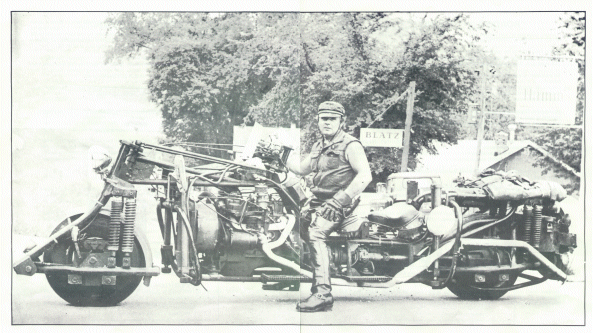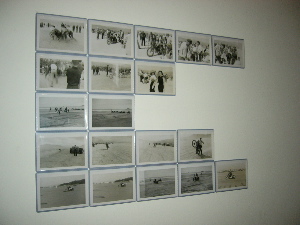Schwarz
View current page
...more recent posts
the science between earthquake and the sunami's landfall
clay house via houses of the future
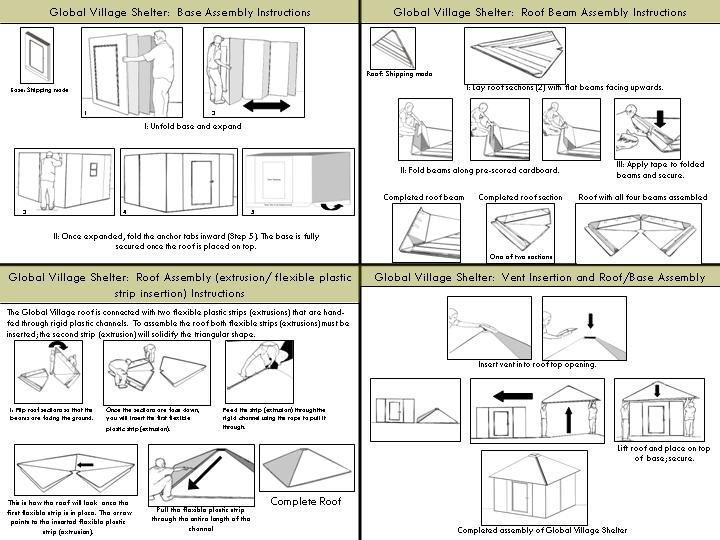
relief housing
case study bird houses
thanks to linda
casa jobin
By JOAN LOWY
Scripps Howard News Service
December 28, 2004
- Bird lovers are worried that one of the world's most high profile construction projects - a 1,776-foot tall office tower being erected on the site of the former World Trade Center in New York - will turn out to be a giant death trap for birds.
The Freedom Tower is expected to be the world's tallest building when it opens in 2009. Plans call for the building to be enclosed in glass, wrapped on the outside with steel cables for support, and crowned with radio towers and wind turbines to supply electricity. Computer generated images on the Web site of the building's developer, Silverstein Properties, show a graceful, brightly illuminated skyscraper.
But scientists and bird enthusiasts say more than a billion birds are killed every year in the United States by slamming into windows or circling lights atop skyscrapers until they are so dazed and confused that they crash.
"Everything that could possibly be bad for birds about a building they are doing," said Rebecca Creshkoff, 47, an avid birdwatcher and member of New York City Audubon.
The Audubon Society and New York New Visions - a coalition of 21 architecture, planning, and design organizations that came together after the 9/11 terrorist attacks that destroyed the trade center to advise on the rebuilding of lower Manhattan - have warned the project's architects and Silverstein Properties that the new building could prove especially deadly for birds.
"We've made them aware of the problem," but developers "are not under any obligation" to adjust their projects for bird safety, said Margaret Helfand, an architect and founder of New York New Visions.
Janno Lieber, Silverstein Properties' project director, said the company has hired a bird consultant to assist in designing the tower.
"In addition to our broader environmental approach, we are investigating a number of strategies for making the new buildings at the World Trade Center bird-friendly," Lieber said in a brief statement supplied in response to an inquiry.
Construction of the project began this year. The first three years of work are expected to take place below ground.
The trade center towers, among the world's tallest buildings before their destruction, were also particularly dangerous for birds, Creshkoff said. After complaints from bird lovers, the Port Authority, which managed the buildings, helped reduce the problem by turning off lights atop the towers during spring and fall migrations, she said.
"I feel an obligation to do something because if you don't work to protect what you love, what meaning is there in life?" Creshkoff said.
On the Net: www.silversteinproperties.com
www.nycaudubon.org/home/
fmuers post top tens for two thousand and four
sound exchange (get yours)
death as metaphor
holy smokes bullwinkle! i got an air port connection waiting here at the ft lauderdale airport
Bisazza was established and maintains its headquarters in the northern Italian city of Vicenza, which Palladio also called home. Founded by Piero's father, Renato Bisazza, in 1956—a time when the fortuitous combination of craft tradition with postwar industrialization put Italy at the vanguard of contemporary design—the company developed mass-production processes that moved ancient Venetian glassmaking in the direction of a modern mosaic industry. In addition to classic glass mosaic mounted tesserae-style on paper or mesh, Bisazza produces specialty tiles like Oro, featuring 24-karat gold leaf sandwiched between vitreous layers, and Gemme, which incorporates avventurina, a synthetic stone developed in 17th-century Venice that creates a glittering, jewellike effect.
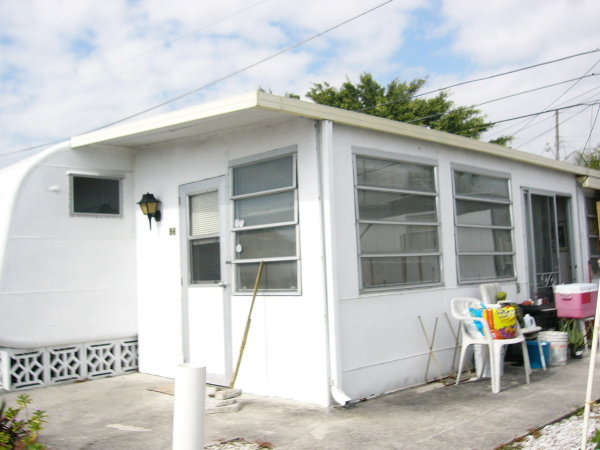
so-fla vernacular: trailer home w/ "florida room" addition
autopen
Dear a-matter reader: After exactly five years, a-matter is coming to an end as a successful project of Sedus Stoll AG. In concrete terms, this means that no new information will be published on this platform and that editorial work has stopped. a-matter, however, will continue to be available as a library. You will continue to be informed of architectural matters and projects concerning Sedus Stoll AG. The last update is given below.
"If you look back to the founding document of the 60's left, which was the Port Huron statement (also promulgated in Michigan), you will easily see that it was in essence a conservative manifesto. It spoke in vaguely Marxist terms of alienation, true, but it was reacting to bigness and anonymity and urbanization, and it betrayed a yearning for a lost agrarian simplicity. It forgot what Marx had said, about the dynamism of capitalism and ''the idiocy of rural life.'' Earlier 18th- and 19th-century American communards had often been fleeing or preparing for a coming Apocalypse, and their emulators in the 1960's and 1970's followed this trope as well, believing everything they read about the impending crash, or the exhaustion of the world's resources. The crazy lean-to of the Unabomber began to take dim shape at that period, even if many of the new pioneers were more affected by the work of the pacific Tolstoy or of C. Wright Mills (who used to recommend, if memory serves, that people should build their own cars as well as their own houses)."
im getting everybody free mp3s for christmas this year. so here, merry christmas. maybe start with ODB sussudio and come back to the rest for desert.
the six words dj tony coulter uses to describe the music he plays are : psychedelic, progressive, experimental, folk, sound collage. i could shorten that even further to : world-psyche. his is the type of musical sensibility that dug up "os mutantes" from brasilian obscurity a few years back. but thats just a starting place. he mines even rarer psych music from all over the world. check his playlists and listen to the archives.
"A theory that the ancient Mayans built their pyramids to act as giant resonators to produce strange and evocative echoes has been supported by a team of Belgian scientists"
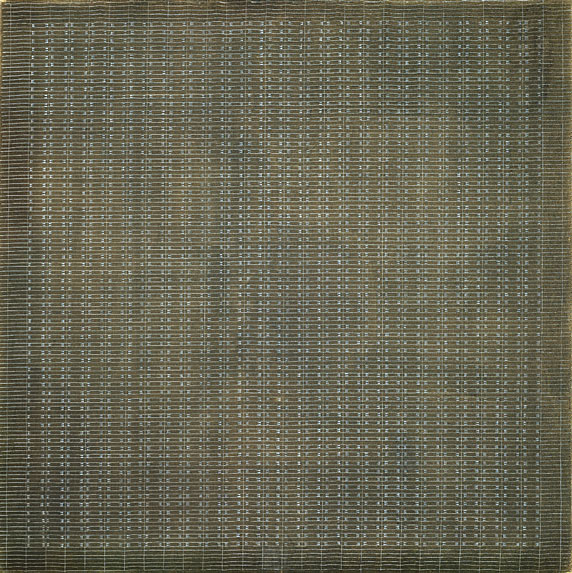
Agnes Martin, White Flower, 1960. Oil on canvas, 71 7/8 x 72 inches. RIP 12.16.2004
Refrigerator Heaven
"The velvety surface of the in-situ black concrete skin was glowing in the light rain at the Topping Out ceremony on December 8th. Ordrupgaard Director Anne-Birgitte Fonsmark thanked the construction crew for their teamwork and superb workmanship in the realization of Zaha Hadid’s visionary design. Minister of Culture Brian Mikkelsen led the list of speakers.
The topping out, an important tradition in construction projects, is when the uppermost steel beam is put into place, which means that the structure under construction has reached its highest point. A flag and evergreens are placed on top of the structure marking the final stretch in the building’s progress."
Freedom Tower Site Poised for a Game of Inches
"Yet the waves have to be 20 feet or higher for the contest to occur, and the competition has been held in only six of the past 16 seasons. With waves of about 30 feet breaking at Waimea this morning, the surf was high enough for the contest to start at about 8:30 a.m. local time, media director Jodi Young said by telephone on what she called ``an absolutely perfect day.''
``It's amazing,'' Young said. ``There's probably about 10,000 people here. It's definitely the most people this beach has ever seen. Really it's just an absolute spectacle. The waves that are coming through are just dwarfing the houses.''
Mayor Michael Bloomberg's administration has launched development strategies in over 20 New York City neighborhoods to create new offices and new housing.
Brookings
Toward a New Metropolis: The Opportunity To Rebuild America
In short, this paper finds that:
In 2030, about half of the buildings in which Americans live, work, and shop will have been built after 2000. The nation had about 300 billion square feet of built space in 2000. By 2030, the nation will need about 427 billion square feet of built space to accommodate growth projections. About 82 billion of that will be from replacement of existing space and 131 will be new space. Thus, 50 percent of that 427 billion will have to be constructed between now and then.
Most of the space built between 2000 and 2030 will be residential space. The largest component of this space will be homes. Over 100 billion square feet of new residential space will be needed by 2030. However, percentage-wise, the commercial and industrial sectors will have the most new space with over 60 percent of the space in 2030 less than 30 years old.
Overall, most new growth will occur in the South and the West. There is tremendous variation in the total amount of buildings to be built between regions. In the Northeast, for example, less than 50 percent of the space in 2030 will have been built since 2000, while in the West that figure is about 87 percent, a near doubling of built space. Fast growing southern and western places—states like Nevada and Florida and metropolitan areas like Austin and Raleigh—will see the most dramatic growth.
Though a small component of overall growth, the projected demand for industrial space in the Midwest outpaces that of the other regions, unlike the other major land uses. States with a strong industrial presence will see the largest amount of growth in industrial space even though other areas may witness faster growth. After California, which far outpaces the nation in terms of absolute square feet of new industrial construction, the next four largest producers of industrial space are all Rust Belt states in the Midwest: Ohio, Michigan, Illinois, and Indiana. By 2030, 70 percent of the Midwest's industrial space will be less than 30 years old.
While these projections may seem overwhelming, they also demonstrate that nearly half of what will be the built environment in 2030 doesn't even exist yet, giving the current generation a vital opportunity to reshape future development. Recent trends indicate that demand is increasing for more compact, walkable, and high quality living, entertainment, and work environments. The challenge for leaders is to create the right market, land use, and other regulatory climates to accommodate new growth in more sustainable ways.
"Two employees of the owner of 111 First St. in Jersey City were arrested by the Fire Department Arson Unit Friday, but investigators are releasing no information about their arrests or the charges they face, officials said."
"The 111 First Street Arts Center is located near the waterfront in Jersey City, just across the Hudson River from the World Trade Center site. Built
in 1860?s, the famous P. Lorillard Tobacco Company, once one of the largest of our nation's tobacco manufacturers, is now the 111 Building, a unique brick architectural treasure.
The 111 First Street Building is owned by NY/NJ property owner Lloyd Goldman. For your information, investors Lloyd Goldman and Joseph Cayre joined with developer Larry Silverstein in buying the World Trade Center 99-year lease for $3.2 billion. "
111 link
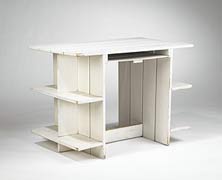
Crate desk
designer:
Gerrit Thomas Rietveld
year: c.1934
manufacturer:
Metz & Co.
Painted pine
39.5"w x 23.5"d x 28"h
". . .a piece of furniture of fine wood, made wholly according to traditional methods, is shipped in a crate to prevent damage and breakage. Someone receiving such a crate at home says, at most: well packed. But it has never been established that such a crate represents a freely rendered method of carpentry aimed straight at its goal. The plain materials of which it is composed make it stronger than its precious contents. . .Therefore, there must finally be someone who chooses the crate instead of the piece of furniture."
Literature:
Complete Reitveld Furniture, Voge, pg. 88-89 fig 136
estimated value: 7000-9000 US$
sale date: 12.07.2003
location: Chicago
lot number: 222
sales title: Modernist 20 Century
[from wright online auction catalog archive]
"There it stood, this immense, playfully improbable checkerboard box, sharply delineated against a gray winter sky, hovering on angled stilts above an otherwise nondescript city street. Way above it. The box is only 30 feet high, but there's a gap of maybe 50 feet between its underside and the roofs of the four-story buildings below."
Richard Pettibone
Leo Castelli
18 East 77th Street, Manhattan
Through Dec. 23
Richard Pettibone has forged a singularly interesting career by copying in miniature what other, more famous artists have done. Copying other people's art may not in itself be highly original, but Mr. Pettibone has done it with such finely tuned wit and tenderly fastidious craft that his work comes to seem extraordinarily personal.
This show of small paintings dating from 1964 to 2004 includes some surprises: the baseball card-size, Photo Realist portrait of Brian Wilson of the Beach Boys, for example, and multipanel works that combine handmade reproductions of well-known paintings, apparently original abstract painting and images from motorcycle and porn magazines. There are also recent mysteriously dark views of an indoor swimming pool.
Mr. Pettibone's engagement with famous artworks remains the most persuasive aspect of his enterprise. His loving, diminutive recreations of Marcel Duchamp's early Cubist masterpiece "La Marie," Frank Stella's black pinstripe paintings and Roy Lichtenstein's black-and-white image of a cigarette with a long ash balanced on a table edge are more than just Oedipal reductions of powerful father figures. They are meditations on the quasi-religious iconography of modern art history and, by extension, of modern consciousness.
Mr. Pettibone never loses his sense of humility or humor. Among several paintings featuring texts made of stick-on letters is one that reads, in part, "I saw the Borofsky show and I decided I should write more. I hope people don't think I'm copying him." KEN JOHNSON for the NYT 12/11/04
opening riffs
evusa
Oskar Leo Kaufmann prefab project
"The Landmarks Preservation Commission is an 11-member panel that oversees changes to the 23,000 buildings in New York City that are either individual landmarks or within one of the city's 82 historic districts. Since the commission designates, on average, 4 new districts and 12 individual landmarks each year, a growing number of residents are subject to its rules.
Whenever anyone wants to renovate, alter, demolish or build anew in or around a landmark or a building in a historic district, commission permission is required before a building permit can be issued. "We want people who live in these places to be able to meet our goal, which is the preservation of that property and of those resources, in as simple, seamless, effortless and intelligent a way possible," Mr. Tierney said."
"The Minimum Dwelling was a response both to the acute interwar housing shortages and to the Western European avant-garde’s attempt to solve this problem. While the focus of the treatise is in fact the minimum necessary habitation for the proletarian worker, Teige had opinions on the present and historical conditions of the city and worker’s housing, contemporary avant-garde architecture and urban design. The result of this breadth of interests is a model for socialist living that applies the principles of dialectical materialism to space in constructing a liberated socialist city. Tiege’s prescriptions range from the correct ordering of social institutions to specific technical data concerning site orientation and window type to use in a room. Despite its abundance of detail, The Minimum Dwelling is an engaging read, even for non-architects. Teige’s enthusiasm hooks the reader and enables even the most stalwart capitalist to take up Teige’s rationale for his own. Architects will be interested in the English translation because Teige’s arguments established a methodology for urban and architectural critique that remains current and incisive 70 years later."
evergleem
"He didn’t know the photograph; that was my own strange idea. I showed it to him after my essay was already finished, and luckily enough he was impressed by it. For me, the reference was primarily formal, even if the depicted location of Wall Street fit into my concept like a lucky accident. What interested me most about the photo was the degree to which Strand was able to represent architecture as early as 1915 in such a way that its authoritarian dimension couldn’t be overlooked. After 1915, artists became involved with this tendency again and again. What fascinates me is how one can arrive at the plastic sculptural model that Richter developed with Eight Grey, starting out with this photographic model. Richter doesn’t, of course, mimetically repeat the authoritarian structures. "
cardboard house
thx, jim b
AfterSherryLevine
" Steidl/Edition 7L has just issued a hefty record of Warhol's contribution to world literature. ''Andy Warhol's Interview, Volume One,'' packages a diverse selection of material from the first decade of the monthly magazine, which the artist founded in 1969. The package costs $475 and comes with a carrying handle and wheels attached, so that you can cart it through the streets when another revolution comes."
casa schwarz
L1000001-1.JPG
"In an interview Mr. Tuttle recalled a piece he showed at the Whitney Museum of American Art in the 1970's, which he described as "some paint at the end of a coffee stirrer, placed on a 40-foot wall." At the opening, after studying this tiny thing, an impeccably dressed man approached the artist and asked him: "Mr. Tuttle, do you have any idea of the cost of real estate in this part of town?"
los angeles 3 big mid-century auctions
la modern online catalog - treadway loomy online catalog
"During my last trek through what remained of the A & R department, I was invited to sort through a stack of records and demos that were to be junked. Among them I discovered a gem: a studio-cut acetate of "Like a Rolling Stone." Carefully packing it into an empty LP jacket, I carried it home and that weekend played it more than once in my apartment. The effect was the same as it had been the first time I had experienced it. Exhilaration. Heart pounding. Body rolling - followed by neighbors banging on the walls in protest. Then, on Sunday evening, it came to me. I knew exactly where the song could be fully appreciated."
"Instead, I went off to the most extraordinary show in Paris, "The Third Eye: Photography and the Occult" at the Maison Européenne de la Photographie (through February 6). With more than 300 small photos, many from the late 19th century and nearly all patently fraudulent, the show is about the power of illusion and the compulsion of belief. Spirit photos, each purporting to capture the ghostly presence of a departed loved one hovering beside the living, throng the exhibition's opening galleries with wraiths—disembodied heads, transparent figures, angelic children, hands raised in blessing, a vaporous dog—and their anxious, deluded companions. Far more alarming (and more than a little hilarious) are pictures of mediums who, when not levitating furniture, could manifest thoughts and dreams as spurts of fluid or ectoplasmic macramé. No matter how hokey, the images curator Pierre Apraxine has gathered here (many of which will travel to the Metropolitan Museum, where "The Third Eye" opens next September 27) have the dreamy, disturbing allure of the most compelling surrealist concoctions. These photographs don't just subvert realism, they feed off and fuck with it, offering a view through the looking glass to a world where hallucinations look as real as, say, grain silos."
wall, uninterrupted - With the walls in the museum’s atrium space four stories high at certain points, the question of its surface material became a major issue. At one point, Taniguchi considered metal panels, but this raised the problem of a pattern across its surface that would be distracting as a backdrop for freestanding or hanging art. Plaster made obvious sense because, in theory, it is limitless. However, industry standards in the U.S. require an expansion joint every 30 feet to prevent cracking. The resulting grid would be just as bad, not to mention contrary to Taniguchi’s general minimalist aesthetic. So KPF used curtain wall construction to make the wall structurally independent of the intermediate floor slabs, and tied only to the existing columns, which are 26 feet apart on center. While the way the curtain wall ties into the existing structure varies slightly from point to point as specific conditions require, here’s the basic pattern: The wall is comprised of 14-gauge steel with lateral cross-bracing. Six-by-six-inch steel angles tie the frame to the museum’s concrete slabs for lateral support. (One benefit of 14-gauge steel studs is they can be put up by plaster workers; heavier gauge studs require steel workers, which would have complicated an already tight schedule.) Over this steel framework is a layer of 3/4” plywood, which acts as a membrane and makes it easier to hang art since screws have something to bite into. One or two layers of sheetrock (depending on fire-rating) is attached to the plywood, then finished with a plaster skim coat.
"Set craftsmen were reputedly responsible for the phantasmagorial sense of architectural detail at El Cabrillo, which includes a central outdoor Moorish fountain, timbered ceilings, Catalina tile work, swashbuckling wrought-iron hardware and scaled-down versions of Citizen Kane-like carved concrete fireplaces in each apartment."
digicamhistory
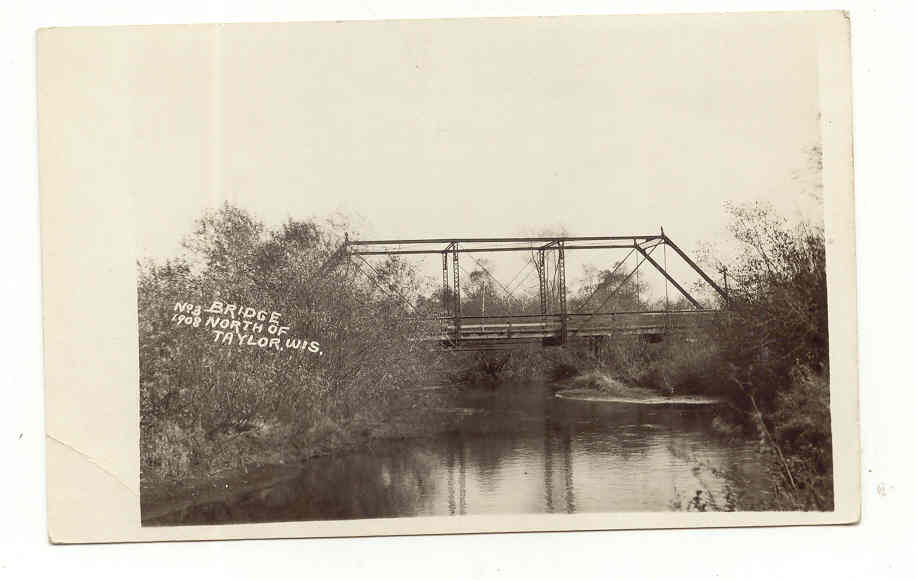
How an Original Velvet Underground Acetate Wound Up in Portland (And Could Be the Most Expensive Record in the World!)
"A persistently high demand for artistic innovation has produced a regime in which conceptual approaches have predominated," Mr. Galenson wrote in a paper. "The art world has consequently been flooded by a series of new ideas, usually embodied in individual works, generally made by young artists who have failed to make more than one significant contribution in their careers."

